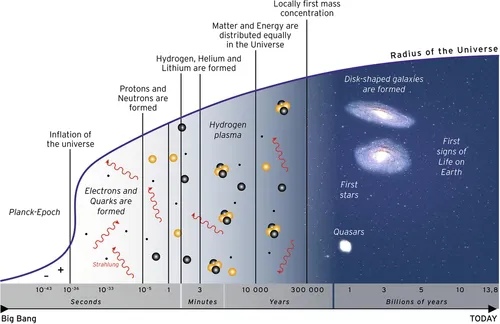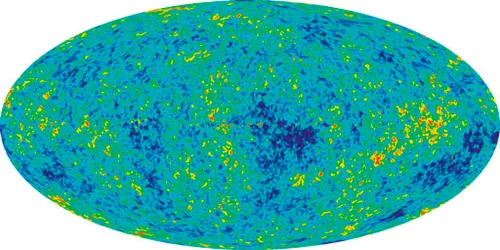
eBook - ePub
Human Physiology in Extreme Environments
Hanns-Christian Gunga
This is a test
Partager le livre
- 336 pages
- English
- ePUB (adapté aux mobiles)
- Disponible sur iOS et Android
eBook - ePub
Human Physiology in Extreme Environments
Hanns-Christian Gunga
Détails du livre
Aperçu du livre
Table des matières
Citations
À propos de ce livre
Human Physiology in Extreme Environments is the one publication that offers how human biology and physiology is affected by extreme environments while highlighting technological innovations that allow us to adapt and regulate environments. Covering a broad range of extreme environments, including high altitude, underwater, tropical climates, and desert and arctic climates as well as space travel, this book will include case studies for practical application. Graduate students, medical students and researchers will find Human Physiology in Extreme Environments an interesting, informative and useful resource for human physiology, environmental physiology and medical studies.
- Presents human physiological challenges in Extreme Environments combined in one single resource
- Provides an excellent source of information regarding paleontological and anthropological aspects
- Offers practical medical and scientific use of current concepts
Foire aux questions
Comment puis-je résilier mon abonnement ?
Il vous suffit de vous rendre dans la section compte dans paramètres et de cliquer sur « Résilier l’abonnement ». C’est aussi simple que cela ! Une fois que vous aurez résilié votre abonnement, il restera actif pour le reste de la période pour laquelle vous avez payé. Découvrez-en plus ici.
Puis-je / comment puis-je télécharger des livres ?
Pour le moment, tous nos livres en format ePub adaptés aux mobiles peuvent être téléchargés via l’application. La plupart de nos PDF sont également disponibles en téléchargement et les autres seront téléchargeables très prochainement. Découvrez-en plus ici.
Quelle est la différence entre les formules tarifaires ?
Les deux abonnements vous donnent un accès complet à la bibliothèque et à toutes les fonctionnalités de Perlego. Les seules différences sont les tarifs ainsi que la période d’abonnement : avec l’abonnement annuel, vous économiserez environ 30 % par rapport à 12 mois d’abonnement mensuel.
Qu’est-ce que Perlego ?
Nous sommes un service d’abonnement à des ouvrages universitaires en ligne, où vous pouvez accéder à toute une bibliothèque pour un prix inférieur à celui d’un seul livre par mois. Avec plus d’un million de livres sur plus de 1 000 sujets, nous avons ce qu’il vous faut ! Découvrez-en plus ici.
Prenez-vous en charge la synthèse vocale ?
Recherchez le symbole Écouter sur votre prochain livre pour voir si vous pouvez l’écouter. L’outil Écouter lit le texte à haute voix pour vous, en surlignant le passage qui est en cours de lecture. Vous pouvez le mettre sur pause, l’accélérer ou le ralentir. Découvrez-en plus ici.
Est-ce que Human Physiology in Extreme Environments est un PDF/ePUB en ligne ?
Oui, vous pouvez accéder à Human Physiology in Extreme Environments par Hanns-Christian Gunga en format PDF et/ou ePUB ainsi qu’à d’autres livres populaires dans Biowissenschaften et Umweltwissenschaft. Nous disposons de plus d’un million d’ouvrages à découvrir dans notre catalogue.
Informations
Sujet
BiowissenschaftenSous-sujet
UmweltwissenschaftChapter 1
Introduction
Hanns-Christian Gunga Professor, Center for Space Medicine and Extreme Environments, Institute of Physiology, CharitéCrossOver (CCO), Charité University Medicine Berlin, Berlin, Germany
Abstract
This chapter discusses the evolution of the universe, the galaxies, and the Earth. It describes the origin and distribution of chemical elements in the universe, as well as the physical and chemical components that seem to be important for the evolution of life on Earth. Finally, the chapter considers the origins of primates and humans.
Keywords
Universe
Chemical evolution
Life on Earth
Anthropology
Early humans
1.1 Universe
According to latest calculations, the age of the universe is around 13.8 billion years [1]. It probably came into existence by the “Big Bang.” The presence of possible antecedent universes is beyond our knowledge. Immediately after the Big Bang, in the so-called Planck Epoch, the four presently known elemental forces—gravitation, strong and weak nuclear energy, and electromagnetism—began to separate, and an explosive inflation of the universe ensued. Thereafter, electrons, quarks, and radiation developed, and about 10− 5 s after the Big Bang the first protons and neutrons came into existence. In the course of this first second after the Big Bang and the subsequent cooling processes due to the explosive inflation of the universe, known matter originated. Presumably, in addition, matter and energy forms were created that currently still elude our access and exact description (Figure 1.1). The important fact is that this fraction of matter and these energy forms constitute the predominant part in the universe. According to recent calculations, merely 4% of the mass of the universe can be allotted to the matter that we can see and analyze, the so-called “baryonic matter,” which represents the construction material of atoms, 73% being constituted by “dark energy” on the one hand and 23% by “dark matter” on the other hand, leaving unclear what this matter actually consists of [2]. One should be at least aware of this fact when in later chapters the chemical composition of the human body will be discussed in detail. Among these particles of hypothetic matter are the so-called weakly interacting massive particles (WIMPs) [3]. These are heavy, inert particles that hardly interchange with the visible world as we see it. According to recent concepts, even more complex super-WIMP structures are supposed to exist in this exotic world of dark matter possessing its own forms of power and light not perceptible by us. According to the concepts of theoretical physicists and astronomers, these exotic particle forms originated immediately after the Big Bang, only to be partly destroyed 1 ns afterwards by clashes of particles of dark matter. Only after further expansion, and thus cooling of the universe (age of the universe > 10 ns), the amount of WIMPs now calculated theoretically remained in the universe because, due to too low temperature and density, no new WIMPs could be formed in the universe and because the probability of clashes of dark matter among each other gradually decreased drastically [2]. Approximately three minutes after the Big Bang, the first elements, hydrogen and helium, came into existence, and in the following 10,000 years an almost equal distribution of matter and energy in the universe occurred. Until today, the universe has consisted predominantly of these two elements—92.9% hydrogen and 6.9% helium—and the remaining known elements in the universe, the origination of which shall be described in detail later, amount to merely 0.2% of the atoms in the universe (Table 1.1). Due to slight differences in the distribution of the atoms, about 300,000 years later accumulations of matter, and then the first stars appeared. As far as we know right now, the oldest object in the universe to be verified is a quasar aged 13 billion years [5] (Figure 1.1). According to our current state of knowledge, the first galaxies were formed approximately 3-5 billion years after the Big Bang. The unequal distribution of galaxies in the universe, generated by extremely small differences in density in the distribution of matter directly after the Big Bang in the inflationary state of the universe, is still perceptible by the differences in temperature. The temperature differences were recently impressively demonstrated [6] (Figure 1.2). The differences found in the distribution of temperatures are only around < 0.0002 K, but they allow conclusions regarding the mass differences in the early universe and enable a hypothesized “frozen image” of the state of the universe directly after its formation following the Big Bang.

Figure 1.1 Emergence of the universe from the Planck-Epoch 13 billion years ago; its sudden explosive inflation, and the forming of electrons, quarks, protons, neutrons, hydrogen, helium, and mass concentrations that became the first stars and galaxies until today.
Table 1.1
Atoms in the Universe—Percent atom abundance of most abundant atoms in the Universe.
| Atoms | % Abundance | SEM |
| H | 92.969 | 0.0 |
| He | 6.901 | 0.311 |
| O | 0.068 | 0.003 |
| C | 0.040 | 0.002 |
| N | 0.009 | 0.0006 |
| All others | 0.011 | 0.0005 |
| Total | 100.000 |
(Adapted from [4])

Figure 1.2 The Cosmic Microwave Background temperature fluctuations. The image is a Mollweide projection of the temperature variations over the celestial sphere. The average temperature is 2.275 K, and the colors represent the tiny temperature fluctuations. Red regions are warmer and blue regions are colder by about 0.0002°K. (Adapted from http://wmap.gsfc.nasa.gov/media/101080) [7].
1.2 Galaxies
First, there were no galaxies as we know them now as more or less disc-shaped assemblies of stars, but as loose clouds of galaxies. About 11 billion years ago, gravity began to form the first galaxies as we know them today (Figure 1.1). With more and more mass accumulation, especially toward the center of a galaxy, a black hole is created where even light cannot escape. Our own galaxy, the Milky Way, has such a super massive black hole today. This structure is not fixed and cannot be seen alone. Instead, galaxies in themselves form clusters, and these clusters even form bigger super clusters, which again are concentrated into filaments that connect the different super clusters, forming a kind of gigantic web cluster. For a long time an open question had been what keeps galaxies from falling apart, forming instead those clusters and super clusters that keep them together. Today, astronomers are convinced it is the “dark matter,” which, as mentioned above, is matter that exists approximately six times more often in the universe than that baryonic matter that we know. Indirect hints to the existence of matter have come from so-called “gravitational lenses” that deviate light on its way through the universe. However, the dark matter has a probably even stronger counterpart, the “dark energy” in the universe, an unknown force that pulls the galaxies, clusters, and other structures apart from each other. For the existence of the Earth and ourselves, it is crucial to recognize that our solar system is actually placed in a very special part of our own galaxy. We are far enough away from the center of the Milky Way with its black hole and highly radioactive zones—an environment that makes life forms as we know them impossible—and not too far away from the center so that we have a fairly stable place in the outer part of the galaxy, the so-called “habitable zone” of the galaxy, circulating around the center in about 225-250 million years, the cosmic or galactic year [8–10].
Our galaxy, the Milky Way, is a medium-sized spiral galaxy in the galaxy cluster Local Group. It has a diameter of about 100,000 light-years,1 and consists of approximately 200 billion fixed stars like our own sun [11–13]. A fixed star of the size of our sun produces its energy by nuclear fusion processes. At about 5 million Kelvin, four hydrogen atom...